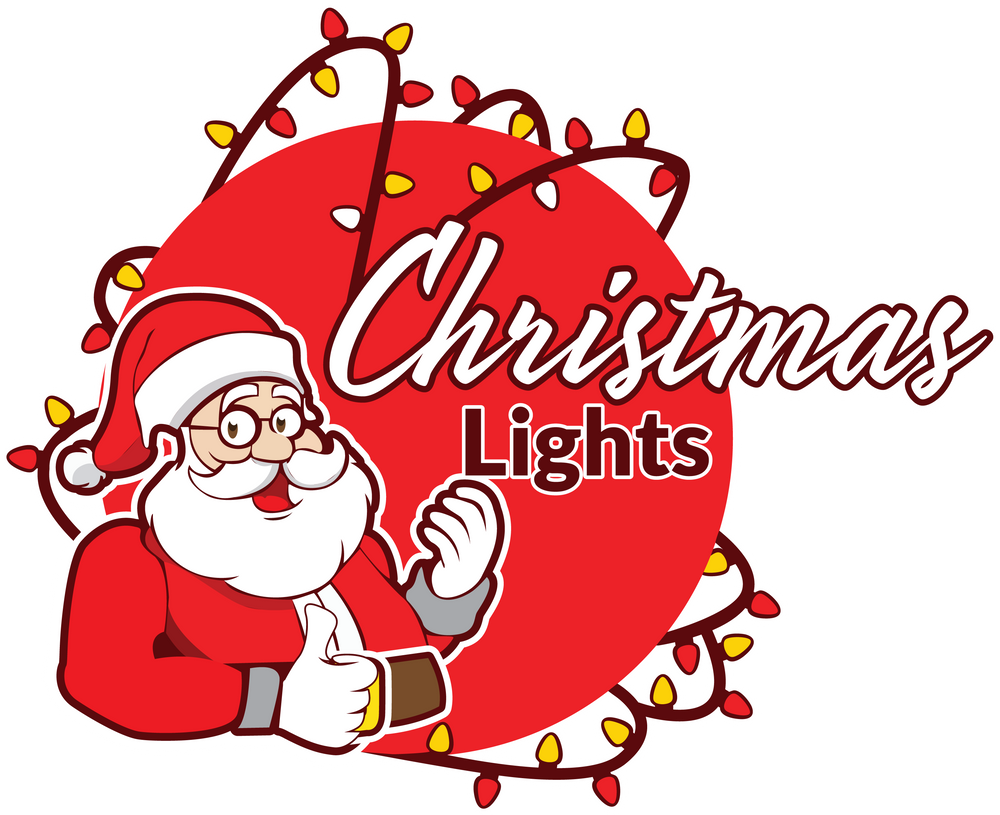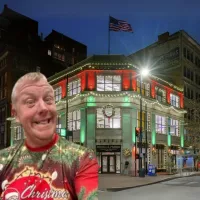Blog
Our Top Blog Posts

10 Tips for Safely Installing Professional Christmas Lights
The festive season is a magical time of the year, and nothing captures the spirit of Christmas quite like beautifully decorated lights. Whether you're a homeowner looking to spruce up your property or a professional decorator working on a commercial project, it's essential to prioritize safety when installing Christmas lights. To ensure that your holiday season remains joyful and accident-free, we've compiled ten valuable tips for safely installing professional Christmas lights.
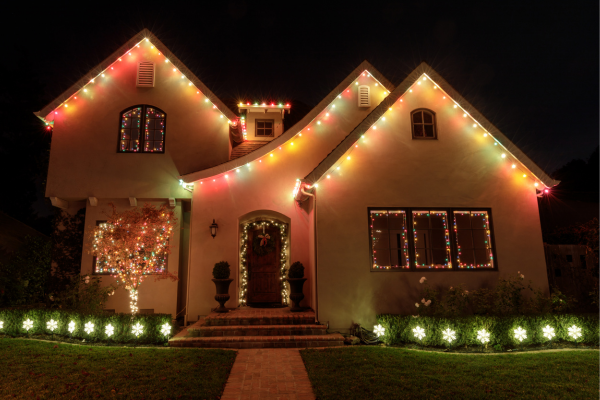
Plan and Prepare for Your Christmas Lights
Before you start hanging lights, take the time to plan your installation. Evaluate the area you want to decorate, identify potential hazards, and determine the best placement for your lights. Create a detailed plan and gather all the necessary tools and equipment, such as ladders, hooks, extension cords, and timers.
Inspect Lights and Cords Before Hanging Christmas Lights
Before installation, carefully inspect all your Christmas lights and cords for any signs of damage, frayed wires, or broken sockets. Replace any faulty lights or cords to avoid electrical hazards. It's also crucial to use lights specifically designed for outdoor use, as they are weather-resistant and designed to withstand the elements.
Use Outdoor-Rated Extension Cords for Your Christmas Lights
When using extension cords, make sure they are rated for outdoor use. These cords are designed to handle the demands of outdoor environments and are equipped with waterproof connections. Avoid overloading the extension cords and never connect multiple cords together, as it can create a fire risk.
Chose LED Lights for Energy-Efficient Christmas Lights
Opt for energy-efficient LED lights, which consume less power and produce less heat compared to traditional incandescent bulbs. LED lights are cooler to the touch, reducing the risk of burns and fire hazards. Additionally, they have a longer lifespan, saving you money in the long run.
Use Proper Clips and Hangers To Hang Your Christmas Lights
Secure your lights with appropriate clips, hooks, or hangers specifically designed for outdoor use. Avoid using nails, staples, or tape, as they can damage your property or create a safety hazard. Choose sturdy, weather-resistant attachments that will keep your lights in place throughout the holiday season.
Avoid Overloading Circuits While Hanging Christmas Lights
Distribute the load of your lights across multiple circuits to prevent overloading. Consult your circuit breaker panel and calculate the amperage required for your lights. Plugging too many lights into a single outlet can cause electrical problems and pose a fire risk.
Mindful Outdoor Decorations With Your Christmas Lights
If you're using decorations or props alongside your lights, ensure they are securely anchored and won't interfere with the lights' operation. Avoid placing decorations near heat sources or in areas prone to moisture accumulation. Keep pathways and entrances clear to prevent tripping hazards.
Beware of Overhead Power Lines While Hanging Christmas Lights
When installing lights outdoors, always be cautious of overhead power lines. Maintain a safe distance and never attach lights or decorations to utility poles or power lines. If you need to work near power lines, consult a professional electrician to ensure your safety.
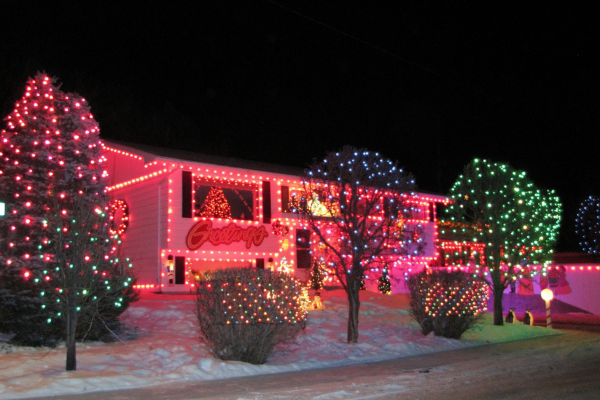
Practice Safe Ladder Use While Hanging Christmas Lights
When working at heights, use a sturdy and stable ladder. Make sure it's on solid ground and have someone assist you if possible. Maintain three points of contact with the ladder at all times and avoid reaching too far to hang lights. If the height is significant, consider hiring professionals to handle the installation.
Take Down Lights Promptly or Install Permanent Lights
Once the holiday season is over, promptly remove all your Christmas lights. Leaving them up for an extended period can lead to weather damage and increase the risk of electrical hazards. Store lights properly in a dry and safe place to preserve their lifespan.
Installing professional Christmas lights can be a delightful experience, but it's crucial to prioritize safety throughout the process. By following these ten tips, you can ensure a safe and joyful holiday season for yourself,
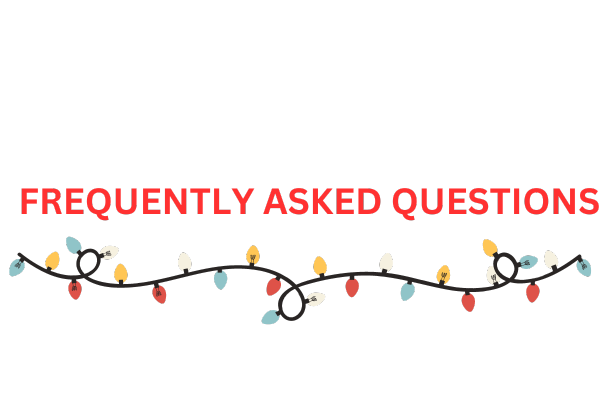
Do I need any special tools to install professional Christmas lights?
While not necessarily "special" tools, it's recommended to have a ladder, extension cords, clips or hooks for securing the lights, and a timer or remote control for easy operation.
How do I ensure the safety of the electrical connections?
Use outdoor-rated extension cords and ensure they are not damaged. Use waterproof connectors or electrical tape to protect the connections from moisture. Avoid overloading circuits by distributing the load across multiple outlets.
Should I use LED or incandescent lights for professional installations?
LED lights are generally safer and more energy-efficient. They produce less heat and have a longer lifespan compared to incandescent lights, making them a popular choice for professional installations.
How should I secure the lights to prevent them from falling or getting damaged?
Use clips or hooks designed specifically for outdoor lights to secure them to gutters, shingles, or other suitable surfaces. Avoid using staples or nails that can damage the wires or create safety hazards.
Can I install Christmas lights in rainy or snowy weather?
It's best to install lights during dry weather conditions to minimize the risk of electrical shock. If it's necessary to install lights in wet conditions, make sure to use outdoor-rated, waterproof lights and connectors.
Are there any precautions I should take when installing lights on trees or bushes?
Avoid wrapping lights tightly around branches to prevent damage. Use clips or ties to secure the lights loosely and evenly. Be mindful of any power lines or other obstacles that may pose a safety risk.
Is it necessary to hire a professional for installing Christmas lights?
t depends on your comfort level and the complexity of the installation. If you're not confident in your abilities or have a large-scale project, hiring a professional can ensure a safe and visually appealing result.
How can I prevent tripping hazards from the light cords?
Keep cords away from high-traffic areas or use cord covers to secure them to the ground. Avoid running cords across walkways or driveways where people may trip over them.
Can I leave the lights on overnight?
It's recommended to use a timer or set a specific schedule for the lights. Leaving them on overnight can be a fire hazard and may increase energy consumption. Timers can help conserve energy and prolong the lifespan of the lights.
How should I store the lights after the holiday season?
Remove the lights carefully, avoiding any tugging or pulling that may damage the wires. Store them in a dry, cool place in a well-organized manner to prevent tangling. Consider using storage reels or containers specifically designed for Christmas lights.


10 Tips for Safely Installing Professional Christmas Lights
The festive season is a magical time of the year, and nothing captures the spirit of Christmas quite like beautifully decorated lights. Whether you're a homeowner looking to spruce up your property or a professional decorator working on a commercial project, it's essential to prioritize safety when installing Christmas lights. To ensure that your holiday season remains joyful and accident-free, we've compiled ten valuable tips for safely installing professional Christmas lights.

Plan and Prepare for Your Christmas Lights
Before you start hanging lights, take the time to plan your installation. Evaluate the area you want to decorate, identify potential hazards, and determine the best placement for your lights. Create a detailed plan and gather all the necessary tools and equipment, such as ladders, hooks, extension cords, and timers.
Inspect Lights and Cords Before Hanging Christmas Lights
Before installation, carefully inspect all your Christmas lights and cords for any signs of damage, frayed wires, or broken sockets. Replace any faulty lights or cords to avoid electrical hazards. It's also crucial to use lights specifically designed for outdoor use, as they are weather-resistant and designed to withstand the elements.
Use Outdoor-Rated Extension Cords for Your Christmas Lights
When using extension cords, make sure they are rated for outdoor use. These cords are designed to handle the demands of outdoor environments and are equipped with waterproof connections. Avoid overloading the extension cords and never connect multiple cords together, as it can create a fire risk.
Chose LED Lights for Energy-Efficient Christmas Lights
Opt for energy-efficient LED lights, which consume less power and produce less heat compared to traditional incandescent bulbs. LED lights are cooler to the touch, reducing the risk of burns and fire hazards. Additionally, they have a longer lifespan, saving you money in the long run.
Use Proper Clips and Hangers To Hang Your Christmas Lights
Secure your lights with appropriate clips, hooks, or hangers specifically designed for outdoor use. Avoid using nails, staples, or tape, as they can damage your property or create a safety hazard. Choose sturdy, weather-resistant attachments that will keep your lights in place throughout the holiday season.
Avoid Overloading Circuits While Hanging Christmas Lights
Distribute the load of your lights across multiple circuits to prevent overloading. Consult your circuit breaker panel and calculate the amperage required for your lights. Plugging too many lights into a single outlet can cause electrical problems and pose a fire risk.
Mindful Outdoor Decorations With Your Christmas Lights
If you're using decorations or props alongside your lights, ensure they are securely anchored and won't interfere with the lights' operation. Avoid placing decorations near heat sources or in areas prone to moisture accumulation. Keep pathways and entrances clear to prevent tripping hazards.
Beware of Overhead Power Lines While Hanging Christmas Lights
When installing lights outdoors, always be cautious of overhead power lines. Maintain a safe distance and never attach lights or decorations to utility poles or power lines. If you need to work near power lines, consult a professional electrician to ensure your safety.

Practice Safe Ladder Use While Hanging Christmas Lights
When working at heights, use a sturdy and stable ladder. Make sure it's on solid ground and have someone assist you if possible. Maintain three points of contact with the ladder at all times and avoid reaching too far to hang lights. If the height is significant, consider hiring professionals to handle the installation.
Take Down Lights Promptly or Install Permanent Lights
Once the holiday season is over, promptly remove all your Christmas lights. Leaving them up for an extended period can lead to weather damage and increase the risk of electrical hazards. Store lights properly in a dry and safe place to preserve their lifespan.
Installing professional Christmas lights can be a delightful experience, but it's crucial to prioritize safety throughout the process. By following these ten tips, you can ensure a safe and joyful holiday season for yourself,

Do I need any special tools to install professional Christmas lights?
While not necessarily "special" tools, it's recommended to have a ladder, extension cords, clips or hooks for securing the lights, and a timer or remote control for easy operation.
How do I ensure the safety of the electrical connections?
Use outdoor-rated extension cords and ensure they are not damaged. Use waterproof connectors or electrical tape to protect the connections from moisture. Avoid overloading circuits by distributing the load across multiple outlets.
Should I use LED or incandescent lights for professional installations?
LED lights are generally safer and more energy-efficient. They produce less heat and have a longer lifespan compared to incandescent lights, making them a popular choice for professional installations.
How should I secure the lights to prevent them from falling or getting damaged?
Use clips or hooks designed specifically for outdoor lights to secure them to gutters, shingles, or other suitable surfaces. Avoid using staples or nails that can damage the wires or create safety hazards.
Can I install Christmas lights in rainy or snowy weather?
It's best to install lights during dry weather conditions to minimize the risk of electrical shock. If it's necessary to install lights in wet conditions, make sure to use outdoor-rated, waterproof lights and connectors.
Are there any precautions I should take when installing lights on trees or bushes?
Avoid wrapping lights tightly around branches to prevent damage. Use clips or ties to secure the lights loosely and evenly. Be mindful of any power lines or other obstacles that may pose a safety risk.
Is it necessary to hire a professional for installing Christmas lights?
t depends on your comfort level and the complexity of the installation. If you're not confident in your abilities or have a large-scale project, hiring a professional can ensure a safe and visually appealing result.
How can I prevent tripping hazards from the light cords?
Keep cords away from high-traffic areas or use cord covers to secure them to the ground. Avoid running cords across walkways or driveways where people may trip over them.
Can I leave the lights on overnight?
It's recommended to use a timer or set a specific schedule for the lights. Leaving them on overnight can be a fire hazard and may increase energy consumption. Timers can help conserve energy and prolong the lifespan of the lights.
How should I store the lights after the holiday season?
Remove the lights carefully, avoiding any tugging or pulling that may damage the wires. Store them in a dry, cool place in a well-organized manner to prevent tangling. Consider using storage reels or containers specifically designed for Christmas lights.

Copyright ©2025 All Right Reserved website designed by christmaslights.io
Terms of Service / Privacy Policy
Have questions or need assistance?
Contact us at (855)619-LITE
